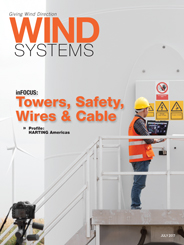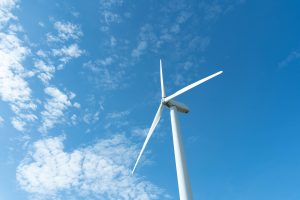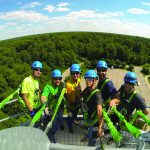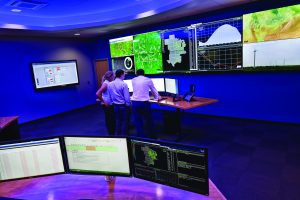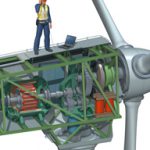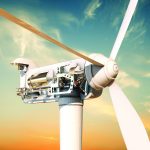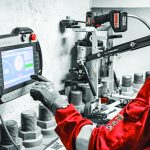As the global population of wind turbines continues to increase, large portions of the population are aging and ultimately approaching the end of their design lives. By 2020, approximately 65 percent of the U.S. fleet, comprising 30,000 turbines, will have been in operation for more than 10 years.1 Similar situations exist in other countries that have large turbine populations, such as Germany, where nearly a third of the wind turbines have been in service for more than 15 years.2
Although the population ages, many turbines have demonstrated the ability to continue operating beyond their design lives, which are typically 20 years. According to the Wind Power Database, approximately 10,000 turbines in the global population of 200,000 turbines tracked by the database are 20 years old or older and remain in service today.3
Stakeholders in aged turbines are faced with many business decisions as they continue to seek to maximize the output of their assets in future years. Should the aged turbines remain in service? Should they be replaced with newer, higher-power and more-efficient technology? Can the turbines provide service beyond their design lives? The laundry list of factors affecting these decisions includes finance, maintenance, contracts, regulations, risk tolerance, and market conditions. One primary factor affecting these decisions is, of course, the physical condition of the turbine being considered for continued operation. Depending on the needs of the stakeholder, the physical condition of the turbine can be evaluated through a combination of physical inspections and/or analysis, the latter of which is the focus of this article.

(Courtesy: Exponent)
Design vs. Actual Conditions
One commonly accepted approach for analytically evaluating the physical condition of a wind turbine — and other types of machines across other industries — is to compare the historical environmental operating conditions of the machine to the conditions assumed during the design of the machine. For wind turbines, the environmental operating conditions include wind-speed distributions, turbulence intensity, solar radiation, temperature, humidity, and airborne salt concentrations, among others. Continued operation of a turbine is favorable from this analytical perspective when the historical conditions are more benign than the design conditions, resulting in additional operating margin beyond design.
Several sources can be consulted to identify design conditions. In certain situations, design conditions and design calculations may be available from the OEM. Alternatively and more commonly, minimum or nominal design conditions can be acquired from the standards to which the turbine is certified, such as the GL Guidelines for the Certification of Wind Turbines for GL-certified turbines. These standards and guidelines define environmental operating conditions relevant to the design.
For example, a wind turbine certified to the International Electrotechnical Commission (IEC) Class IA is designed for average wind speeds of 10 m/s over its design life, among other parameters.4 The turbine also is designed for a specific wind-speed probability distribution. The wind-speed probability distributions define the fraction of time the wind turbine is expected to experience winds of various speeds. Figure 1 shows an example distribution for a Class IA turbine from the GL Guideline for the Certification of Wind Turbines.

The actual wind-speed distribution experienced by a turbine in operation likely will be different from the certified distribution; the actual distribution will be either relatively benign or relatively harsh. A distribution that is relatively benign compared to the design distribution will have more low-speed winds and fewer high-speed winds, as shown by the orange curve in the figure. Conversely, a distribution that is relatively harsh will have fewer low-speed winds and more high-speed winds, as shown by the blue curve.
Effects of the Wind
The actual wind speeds experienced by a turbine can be determined through analysis of the historical environmental operating conditions at the site, which often can be acquired from the site-specific archived SCADA data and from local meteorological systems. From the comparison of the actual-versus-design wind speeds, a qualitative determination of the wind-speed margin between the actual and design conditions can be made, showing whether the winds at the site have been relatively benign or relatively harsh.
To quantify the margin between the design and actual conditions, the cumulative effects of these winds can be assessed by quantifying the kinetic energy density associated with the winds. The kinetic energy density is a calculated measure of kinetic energy in the wind per unit volume of air. It is equivalent to the dynamic pressure applied to a structure, which results in stresses within that structure, and is a function of the air density and square of the wind speed.

Figure 2 shows a sample plot of kinetic energy densities resulting from the same wind-speed distributions shown in Figure 1. From this curve, the cumulative kinetic energy density is computed for both the design wind-speed distribution and the actual distribution from the site. Examining the ratio of these quantities provides a quantitative metric to compare the effects of the actual and design/certification wind conditions. Further specific structural analysis involving aeroelastic modeling can be pursued as needed.
Wind turbines are designed to withstand wind turbulence in addition to normal winds. For example, the IEC defines a Class IA wind turbine to be designed to withstand a turbulence intensity of 16 percent at a wind speed of 15 m/s over its design lifetime.5 Turbulence intensities can be computed from wind data recorded at the wind-turbine site and are compared with the design values, providing another metric for quantifying the margin between design and actual wind conditions.
Environmental Effects Beyond Wind
The effect of the environment on wind turbines is not limited to wind. Solar radiation, humidity, and airborne salinity can have a deleterious effect on the turbine’s materials. For example, high levels of ultraviolet exposure can cause degradation of organic materials. The GL guidelines6 list a design solar radiation intensity value of 1,000 W/m2, which is a particularly high value. Comparisons between this value and the historic site conditions provide further quantification of the turbine’s environmental condition margin.
Like other machines exposed to the environment, wind turbines contend with the effects of corrosion. Rainfall, humidity, and airborne salinity, along with material susceptibility, affect the potential for corrosion. For example, a wind farm by the ocean is more likely to experience airborne salts stirred up by the sea, whereas the quantity of salt in the atmosphere in inland locations will generally be decreased. Design parameters for these corrosion-related items can be found in design certification documents, including the design certificate itself in some cases. Analysis of these conditions, as with that of wind and solar radiation, helps to identify margins between the environmental operating conditions and the design conditions.
Further Considerations
Beyond the comparison of historical versus design conditions, further analyses can be used to assess continued operation. One option is to analyze the historic availability of the wind turbines of interest, which measures the fraction of time a wind turbine is available for use. These data are used to identify trends, such as increasing amounts of downtime, experienced by a wind turbine as it ages. Additionally, statistical analysis of the data can identify trends that can predict if/when the availability will drop beneath a stakeholder’s acceptable threshold.
Additionally, to help inform expectations of operating life, publicly available information related to the specific wind-turbine model can be reviewed, with the goal of gathering information and operational experiences involving the same or related models installed at other locations. Specific items to consider are the installation locations of the turbine type, the number of turbines installed, reported technical issues, industry experience with the turbines, and common maintenance issues encountered. Information can be found in trade publications, databases, journal articles, and other sources.
As a wind turbine reaches the end of its design life, stakeholders can seek a lifetime extension certification. The certification procedure outlined in DNV-GL-ST-0262, Lifetime Extension of Wind Turbines, consists of both an analytical and a practical part. The analytical part comprises load calculations, reliability analysis, measurements, and other items, and the practical part comprises detailed equipment inspections, review of SCADA data, review of maintenance and availability reports, and analysis of others’ experiences with similar turbines.7
Analyses discussed here, among others, are used to evaluate wind turbines for continued operation. Such analyses can assist stakeholders in a variety of business decisions throughout the life of the turbine.
Acknowledgements
- How to maximize aging wind farms, Worldwind Technology, 2016-01-07; www.windpower-international.com/features/featurehow-to-maximise-aging-wind-farms-4770831/, last accessed 2017-05-11.
- Agnihotri, G., Germany Now Faced With Thousands of Aging Wind Farms, 2015-09-28; oilprice.com/Alternative-Energy/Wind-Power/Germany-Now-Faced-With-Thousands-Of-Aging-Wind-Farms.html, last accessed 2017-05-11.
- The Wind Power Database — Wind Turbine Database www.thewindpower.net/store_manufacturer_turbine_en.php?id_type=4, last accessed 2016-11-2.
- Wind turbines — Part 1: Design requirements, IEC 61400-1:2005(E), 2005.
- Wind turbines — Part 1: Design requirements, IEC 61400-1:2005(E), 2005.
- Guideline for the Certification of Wind Turbines, Germanischer Lloyd, 2010.
- Lifetime Extension of Wind Turbines, DNVGL-ST-0262, March 2016.
















